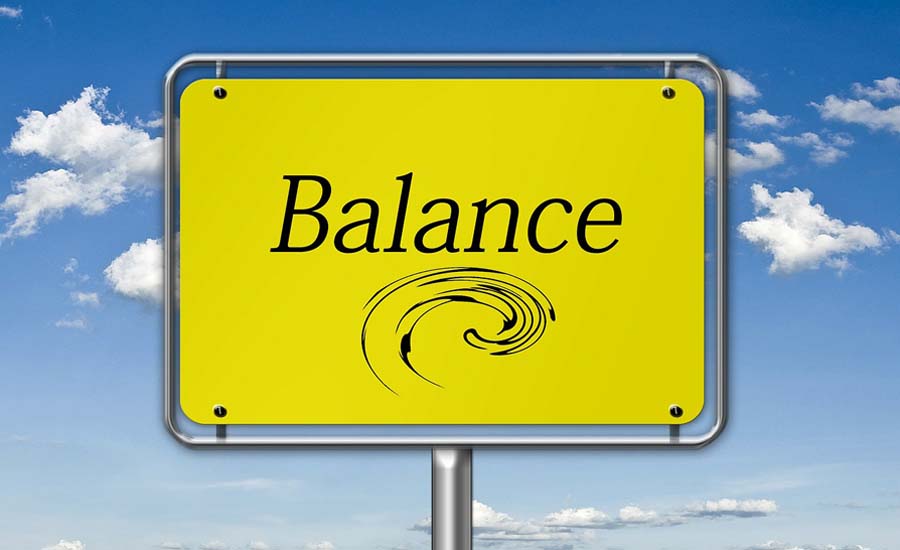Achieving work-life balance goes beyond finding time for the family

Ever feel a little guilty about taking the time for that pick-up game of basketball or a weeknight watercolor class? You shouldn’t—it’s good for you and your job.
That’s what doctoral candidate Victoria Daniel and Dr. Yujie Zhan of Wilfrid Laurier University discovered in their research titled “Wearing Many Hats: How Employee Personal Life Engagement Enriches Creativity at Work,” presented in April at the 2018 Conference of the Society for Industrial and Organizational Psychology in Chicago, Illinois.
The research touches on several topics in SIOP’s 2018 Top 10 Workplace Trends, including work-life balance, the changing nature of how people work, and engaging millennials in the workplace.
While most recent research has focused on how outside interests combat stress, Daniel wanted to look at the other benefits personal interests – activities one engages in outside of work and family – can have on productivity. “Most research on personal activities focuses on its stress recovery benefits, so we wanted to know whether a facet of performance could benefit as well,” she said. “I wanted to understand a wider group of work outcomes in the transfer of resources, such as skills or knowledge, from one’s personal life to work.”
The researchers used a sample of 181 full-time employees from a variety of jobs that were recruited from Amazon Mechanical Turk and found a relationship between workplace creativity and the extent to which individuals participate in a wide range of activities in their personal life beyond work and family roles.
“Personal activities in their own right have mostly been overlooked and therefore an important aspect of non-work life is missed,” Daniel said. “Family demands can be very different from personal life activities—there’s a wide range of activities engaged in out of one’s own interest and volition and the workforce is structurally changing which means there may be more time and desire for personal activities. We focused on how personal life activities influence an important facet of performance, in this case, creativity.”
Employees—especially younger ones—are recognizing that outside activities have an important role in fostering creativity as cited earlier this year in a Forbes article by the Young Entrepreneur Council.
“As people have a higher level of engagement in personal activities they tend to think about information in different ways, which subsequently increases their ability to ‘think outside the box’ and be creative at work,” Daniel said. “In a broad sense, I think the more collective experiences a person has, the wider the pool of knowledge and perspective they have to draw upon in any given situation. I’ve always felt that what I experience during my non-work time has given me new insights and social connections that I wouldn’t otherwise have. I often draw on these unique experiences when I’m thinking about problems or questions in my own work.”
Recognizing how to increase creativity among employees could impact a business’s bottom line. “Creativity is really interesting because everyone in business seems to want it!” Daniel said. “It’s constantly dubbed one of the major drivers of an organization’s competitive advantage and employees who are creative seem to be highly valued. That said, research on the work-life interface often does not examine creativity as an outcome.”
Because the ability to engage in personal interests is somewhat controllable, there may be ways employers can encourage those activities to increase creativity among employees.
“While a person may not be able to change their personality or aspects of their work environment, personal activities are something an individual can change and do more of, which is helpful for understanding and enhancing creativity,” Daniel said.
“For managers and organizations, it may seem counterintuitive to want your employees to spend time away from work,” she continued. “Usually workplace interests are supported by a belief that employees must be ‘work-centric’. In other words, those employees whose identity and priorities are centered around their work role. This, and other research, suggests that employees’ time away from work can benefit their interests, health, and well-being, but also benefit the organization by increasing their performance.
“Supervisors play a major role in supporting their employees to both be creative but also in allowing them to have fulfilling non-work lives,” she said. “Managers should encourage and support employees to engage in their non-work lives as it benefits everyone.”
This information can also be useful when developing work-life policies. While many organizations have family-friendly policies, they often don’t consider employees without families who may not be able to take advantage of them.
“These employees are quickly becoming a major segment of the workforce as younger generations are having fewer children and having them later in life,” Daniel said. “This has the potential to generate backlash from non-beneficiaries. We’re seeing recommendations from expert scholars and thought leaders in industry towards the use of more inclusive policies and practices that don’t require a judgment of merit on the reason for needing to use a work-life policy. For example, employees don’t need to explain why they need to utilize a flexible work arrangement.
“Inclusive work-family policies can broaden the scope, recognizing that people have non-work demands and interests that also play a positive role in them being an effective worker,“ she added
It is likely that all activities do not have equal benefits, something that Daniel wants to examine in additional research.
“I speculate that activities that offer greater opportunity for new experiences and knowledge, such as taking classes, volunteering, community groups and social events, and travelling, will be the most enriching,” she said. “For this study we didn’t qualitatively assess the activities, though our main objective emphasized people having more than one personal activity in their life, to get the variety of different experiences more so than just the benefit of one specific activity. However, I can say this is part of our larger research program and is in the pipeline for future studies.”
“As a note for employees, enjoy your personal time!” Daniel said. “It seems that many people feel guilty for taking time for themselves, and it is definitely hard to do so when we live in times of increasing demands from many simultaneous sources – work, relationships, children, eldercare, etc. Moreover, in the modern working world people are more connected than ever so it becomes more challenging to separate work and non-work time. It may help employees alleviate their own negative feelings about engaging in their personal activities in knowing that it is not only critical for their health and psychological well-being but there are work benefits as well.”e:
Looking for a reprint of this article?
From high-res PDFs to custom plaques, order your copy today!




